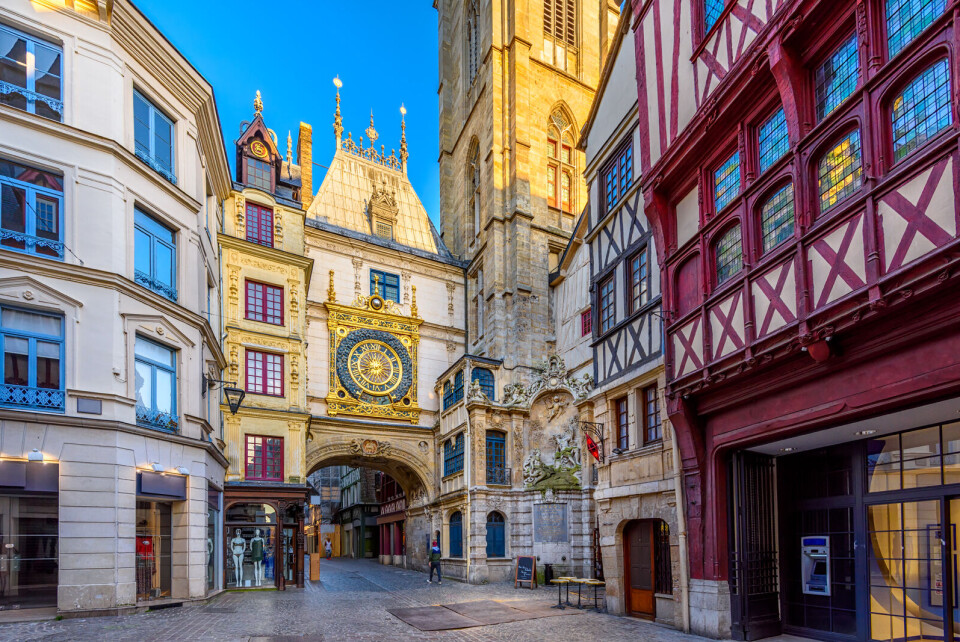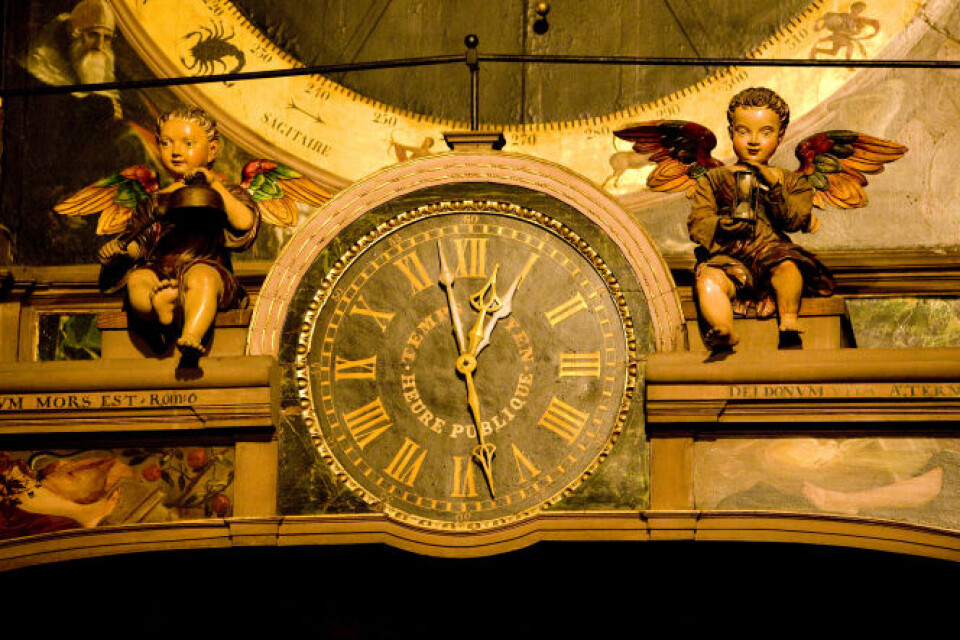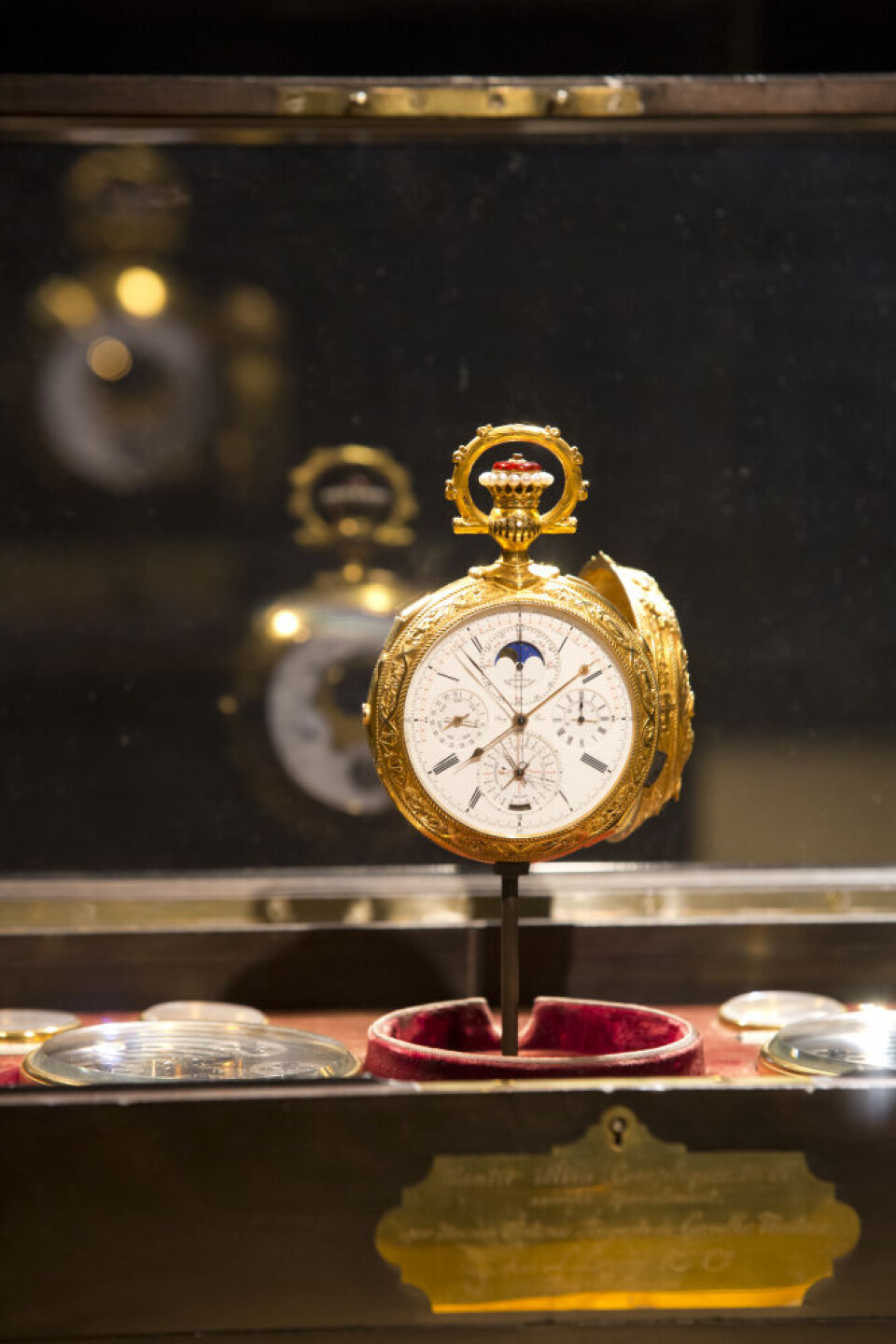-
Visit the French village of Vouvant: along cobbled streets and hiking trails
Explore the rich history and artistic allure of this medieval hideaway, nestled in the heart of the Vendée
-
Photos: 94 chateaux open their doors to visitors in Dordogne
The fifth Chateaux en Fête festival offers a chance to look around many impressive properties that are usually private
-
Six quirky things to do in Strasbourg
Admire pastel-coloured timbered houses, visit a voodoo museum or take a bath... in beer
A tour of France's spectacular clocks
From Paris to Rouen, Bordeaux to Blois, France is home to some extraordinary ‘timepieces’, from the country’s oldest in Paris to restored gems off the beaten track. In no time you will be fascinated

Clock-making is a subtle marriage of science, engineering, craftsmanship, and decorative art. Telling the time involves understanding how the entire universe ticks. Not just the earth’s orbit around the sun, but the seasons, tides, rhythms of the moon, positions of the stars... it is compelling stuff.
From Paris to Rouen, Bordeaux, La Rochelle and Blois, it is hard to say which city has the most spectacular clock. The oldest public one in France is at the Conciergerie on the banks of the River Seine. Originally a Medieval palace, during the Revolution the building was used as a jail.
The prison was only finally closed in 1943, after which the Conciergerie was converted to a museum. The beautifully gilded timepiece on the exterior of the Clock Tower was manufactured in 1371 and the gilded multicoloured face with its allegories of law and justice was added in 1585. Damaged during the Revolution, it was restored by Lepaute in 1849. It was last renovated in 2012.
Another fabulous Parisian clock can be seen in the Musée d’Orsay, occupying a whole wall on the fifth floor of the museum, a relic from the building’s days as a railway station and a testament to the optimism and ambition of the Industrial Revolution.
While in Paris, also check out the Defender of Time in Le Marais, very close to the Pompidou Centre. Created in 1979, it features a man fighting a crab (the sea), a dragon (the earth) and a rooster (the air).
On the hour the man used to fight one of the animals, and at noon, 6pm and 10pm he used to fight all three of them at once. The clock stopped working in 2003 and due to interminable squabbling over the bill, has never been repaired, but is still a remarkable sight.
Bourges, home to France's oldest astronomical clock
The oldest astronomical clock in France is in Bourges. Designed by Jean Fusoris, it was installed in the cathedral in 1424 to celebrate the birth of Charles VII’s son, the future Louis XI. Not as spectacular as some others, it is nevertheless interesting, and the Gothic cathedral, set in beautiful gardens, is one of the finest in France. Do not miss the north tower, which you can climb for panoramic views of Bourges.
While in Bourges, the Palais Jacques Coeur is another fabulous Gothic building. It was constructed by an extremely successful and wealthy entrepreneur and trader called Jacques-Coeur, who was eventually stripped of all his assets by King Charles VII, who owed him enormous sums of money, on a series of entirely fabricated charges including poisoning the king’s mistress. Publicly humiliated, impoverished, and imprisoned, he did manage to escape, only to become ill and die in Greece. The palace he built, however, is stunningly beautiful and well worth visiting.
Strasbourg's show-stopper
Strasbourg has a show-stopping astronomical clock in the cathedral Notre-Dame de Strasbourg, which for 200 years was the tallest building in the world. A tourist attraction in its own right, it was constructed in 1843 and is the third clock on the site. It has mechanical figurines, a perpetual calendar, a planetary dial, a display showing the current position of the sun and the moon, and their eclipses. The 18inch tall figurines of Christ and the Apostles appear while a cockerel crows three times, every day at noon (you have to buy a ticket to watch this).

Bordeaux is another city which has a notable clock, the Grosse Cloche, referring to the bell which is called Armande Louise and weighs more than 7,500 kilos.
The clock was constructed in 1775 with an unusual semi-circular dial and is set in the only remaining section of the city’s historic ramparts.
The bell rings six times a year, on January 1st, May 1st, May 8th, July 14th, and November 11th as well as at midday on the first Sunday of every month. It also rings on August 28th, the date of the 1944 Liberation of Bordeaux.
The Gros Horloge of Rouen
In Rouen, the Gros Horloge in the centre of the historic city is difficult to miss, spanning the rue du Gros-Horloge. An astronomical clock dating back to the 14th century, it has one of the oldest working mechanisms in France.
The façade features a golden sun against a blue background adorned with stars, and the dial is 2.5 metres in diameter. The phases of the moon are shown at the top of the dial, and the days of the week at the base, with allegorical subjects for each one.
While you are in Rouen, a quirky place to visit, for free, is the Musée Le Secq des Tournelles just behind the Beaux-Arts museum, containing a collection of wrought and cast iron items including tools, shop signs, domestic equipment, arms and artworks, housed in a deconsecrated church. From the Romans to the 19th century, you can trace daily life through the displays.
Besançon, capital of clock making
Besançon near the Swiss border is, however, the capital of French clock making, designated to be so at the end of the French Revolution with the aim of reducing the country’s dependence on English and Swiss clockmakers. At its peak, around 20,000 people worked in the industry, but since the invention of quartz movements in the 1970s, those numbers have dwindled to around 1,500 today. The skilled workforce has moved onto micro-technologies, producing components for medical equipment, defence and aeronautics.

The city boasts a stunning astronomical clock dating back to between 1858-1863. With 70 dials, 122 indicators, the local time in 17 places worldwide, the time and heights of the tides in eight French ports, a calendar showing leap years, and times of sunrise and sunset, it is one of the most complex clocks in the world. It chimes the hours and has 21 working automata.
Designed by Auguste-Lucien Vérité and adorned with zodiac signs, you can see all the workings through the glass case. It also controls a dial on the exterior of the cathedral showing the moon’s phases. Check the opening times of the cathedral at the Tourist Office, as they change throughout the year.
The Musée du Temps et Palais Granvelle in Besançon is also fascinating, exploring the history of clock-making through a collection of clocks and exquisite watches. Housed in a Renaissance Palace from the 16th century there are also paintings, furniture and decorative objects tracing the history of the city and the Granvelle family. There is also a Foucault pendulum in the tower, demonstrating the earth’s rotation. (The first was installed by French physicist Léon Foucault in 1851 in the dome of the Panthéon in Paris.)
Morteau, home to the Musée de l’Horlogerie
An hour by car south-east of Besançon, practically on the Swiss frontier, is Morteau, home to the Musée de l’Horlogerie. Housed in a Renaissance chateau, the museum has a massive collection of clocks, watches and rare machines used to manufacture parts. It takes two to three hours to see everything, but at the end you will not only know a lot about French clock making but also about how clocks and watches actually function.
Also in Morteau, you can visit the Fonderie Obertino and find out how bells are cast. The Orbertino family, originally from Italy and Switzerland, have been casting bells for generations. They opened their foundry in Morteau in 1931, and make bells for grandfather clocks, as well as a wide selection of bells for front doors, hotel reception desks, dinner tables, schools and of course cowbells.
There is a lot of information (in English) on their website if you cannot visit, but take their guided tour and you will see exactly how they do it, learn the difference between bronze and steel bells, and even buy a personalised bell from their charming boutique.
Clock cities Auxerre and Avallon
Another city with a notable clock is Auxerre; home to a beautiful 15th century clock installed in the ‘Tour de l’horloge’. Beautifully restored, set amongst the half-timbered houses of the pedestrianised historic centre it shows the cycles of the moon as well as the time of the day.
There is a statue of Cadet Rousselle in Auxerre; various plaques and a street named after him, but he wasn’t a war hero, a statesman or even an inventor.
He was a mildly eccentric local lawyer; very jovial, he loved a good party and inspired a children’s nursery rhyme, which you can find on YouTube. The mildness of his eccentricity (he added a large decorated porch to the front of his house, wore bright clothes, organised a festival, and married his niece after the death of his wife) is an interesting indication of the degree to which French society conforms to convention.
Off the beaten track, Avallon, an hour’s drive south from Auxerre, is a great place to explore.
It has an impressively tall clock tower in the pretty historic centre, which can sometimes be visited (ask at the tourist office in advance) as well as two quirky museums.
The privately-owned Musée du Costume is an incredible collection of ornaments, nick-knacks and furniture inhabited by a crowd of waxworks wearing beautiful vintage clothes. You have to take the guided tour, which is in French, but it is worth it even if your language skills are a little rusty.
The other museum, the Musée de l’Avallonnais, is equally anarchic. For three euros, you can inspect prehistoric artifacts found in the region, admire the work of various local painters and sculptors in a mishmash of different styles, which is so far so normal.
Go up to the first floor and you will find an amazing collection of 2,000 items of Taoist clothes, artworks and artifacts donated by Jess Pourret.
It is one of the largest collections in Europe, and worth seeing even if the curation is patchy to say the least. (Taoism is a Chinese spiritual belief in which followers try to live in harmony with the Tao – the source, pattern and substance of everything that exists.) It is an extraordinary mix to find under one roof and well worth your time.
Related stories
Why does France still change the clocks despite EU vote against it?
A tour of French perfumes from Paris to Provence
























